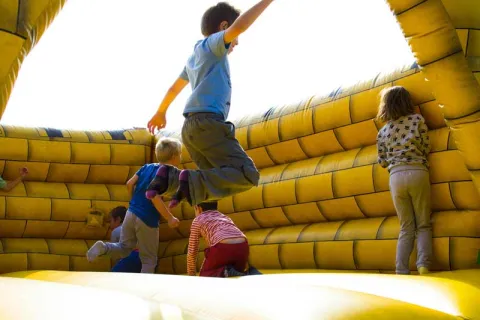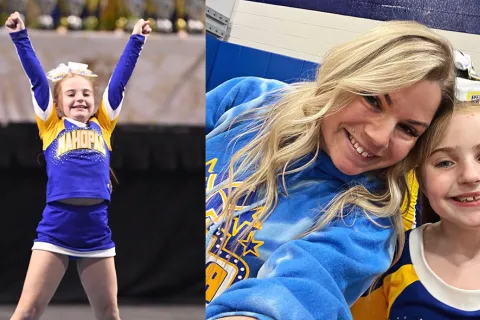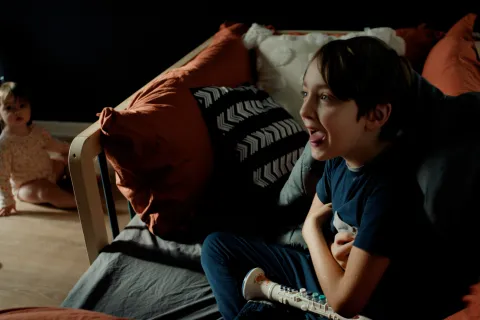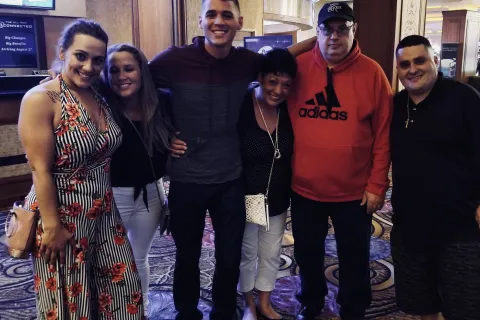Parent seeks help for socially anxious preschooler who has autism
By Dr. John DanialToday’s response is by psychologist John Danial, a 2012 Autism Speaks Weatherstone predoctoral fellow. Dr. Danial’s fellowship supported his work with mentor Jeffrey Wood at the University of California, Los Angeles, developing and evaluating behavioral interventions that reduce anxiety in children, teens and adults with autism and low verbal skills. He is currently completing his post-doctoral placement at Pediatric Minds Early Childhood Center, working with families of children with developmental delays and social-emotional challenges.
My almost 3-year-old was recently diagnosed as having autism spectrum disorder. We struggle going places such as open gym or even the library because he doesn't like other kids in his space. He does okay with adults, but other kids make him extremely anxious. How do I help him become more comfortable when other children are playing in the same area or with the same set of toys?
I commend you for seeking support for your son at this young age. Receiving a diagnosis of autism spectrum disorder can be challenging and confusing. Yet research shows that early intervention can help maximize cognitive, language and social development.
In my pre-doctoral work at UCLA and my post-doctoral training at Pediatric Minds Early Childhood Treatment Center, my colleagues and I have seen many forms of anxiety in children and teens who have autism. Like your son, many of them experience anxiety around other children, especially groups of children. Understanding the reasons for this anxiety can help select approaches that help.
For example, you mention that your son “does okay” with adults, but not other kids. This is very common. While adults tend to be more consistently friendly and accommodating, children can be very unpredictable. For instance, it’s not unusual for three-year-olds to grab toys from each other, cry, get very close to each other and just be loud! This can be particularly anxiety provoking for someone with autism.
In addition, many people with autism are hypersensitive to sensory input. As a result, public places such as open gyms or even a lively children’s library can be over-stimulating. The sights, sounds and smells can feel intense, uncomfortable and overwhelming. Understandably, this can lead a child to avoid these environments and become upset in the midst of them.
Developing a personalized intervention plan to help with anxiety in children
I strongly encourage you to work with your son’s therapists to develop a personalized intervention plan. Children with autism who are under age 3 can qualify for such services through their state’s Early Intervention program. After age 3, these services can be accessed as part of an Individualized Education Plan (IEP) through your school district.
Fortunately, many programs are available to help young children with the type of social anxiety you describe. These include play-based forms of Applied Behavioral Analysis, occupational therapy that includes sensory integration, communication-focused intervention, social skills play groups and other options. Many children do best with a multidisciplinary approach that combines two or more of these methods with close collaboration among the care providers.
While every child has different needs, here are some strategies you can try – ideally in collaboration with your son’s therapists:
- Practice. Are there specific social situations that tend to trigger your son’s anxiety? For instance, does he get upset when another child tries to take his hand or pull him into a game? Consider teaching him simple phrases he can use in these situations. For example, a simple “no.” You can also teach and practice toy sharing and turn taking at home. If your child enjoys play dough, for example, place just a few pieces on the table and take turns modeling each of the pieces, handing them back and forth. This can help him learn sharing and even waiting for gradually increasingly periods before getting what he wants. These skills can be difficult to learn. So start with brief periods of waiting and offer plenty of praise along the way. Providing this type of structured opportunities to practice social skills can encourage your son to use them in social settings.
- Start slow. A room full of children may be too overwhelming for your child to use the new skills that he’s practiced with you at home. Consider hosting a playdate with one other child who is relatively calm and engaging. Sometimes, a slightly older child will understand how to be more accommodating.
- In selecting where to have the playdate, consider your son’s comfort level. You might start at home or maybe a relatively quiet place at a nearby park.
- Choose some relatively structured activities such as games or sharable toys that your child knows and likes. Keep the playdates relatively short to further the chances of success.
- Bring the familiar. When entering a loud or anxiety producing environment, a comfort object may help provide a sense of security in an otherwise overwhelming environment. Consider allowing your son to bring a familiar toy, stuffed animal or book. Another possibility is a toy or game that actively engages his attention – and so directs his attention away from the hubbub around him.
- Be patient. I encourage parents to appreciate that their child’s stage of development may not match what’s typical for his or her age. This is particularly true of social development in children on the autism spectrum. By focusing on small steps, you can foster your child’s confidence and decrease the likelihood of setbacks.
Remember, your child – like all children – is continually developing. You can support his social development – while decreasing anxiety around other children – by providing ample opportunities for success.
Best wishes on your journey with your son. Please remember, you are not alone.
Related resources
- Get more information on early intervention and individualized education services
- Research yields tips for easing anxiety in nonverbal kids with autism
Editor’s note: The above information is not meant to diagnose or treat and should not take the place of personal consultation, as appropriate, with a qualified healthcare professional and/or behavioral therapist.









